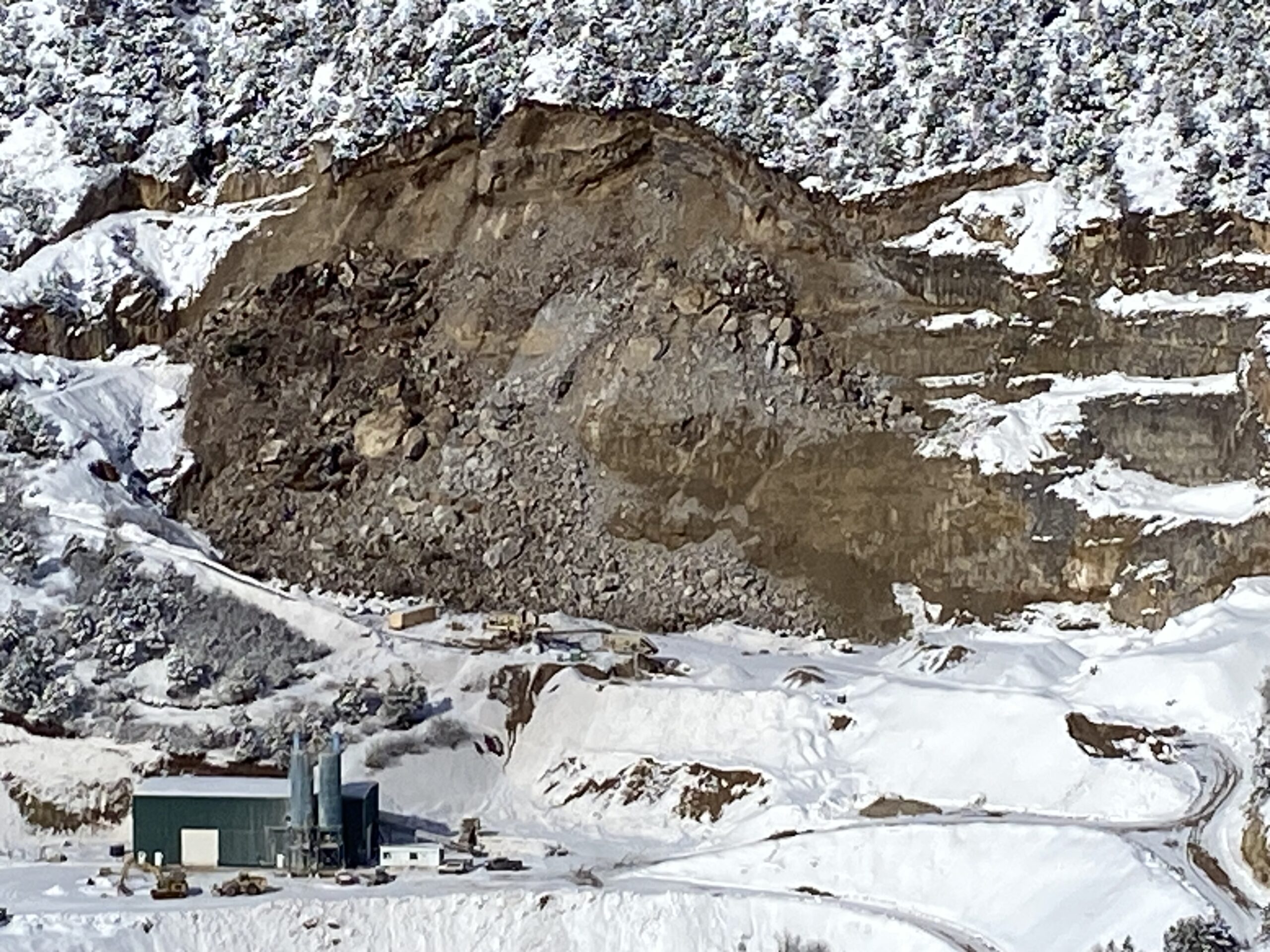
The Rocky Mountain Industrials limestone quarry on January 19, 2023, the day after the slope collapse occurred.
The massive slope collapse at the limestone quarry operated by Rocky Mountain Industrials has led state and federal regulators to temporarily shut down mining operations while they investigate possible permit violations.
The collapse occurred about 3:05 p.m. on Jan. 18, causing a rockslide about 300 feet wide that brought boulders and huge slabs of limestone tumbling down onto the mined slope below.
A person in the vicinity described the noise as “multiple jet planes grumbling, getting closer and closer and getting louder and louder, for about 15 to 20 seconds.”
Bobby Wagner, RMI vice president of engineering, told state inspectors that the slide first broke loose on the west side of the quarry, where the limestone deposit tilts downward at a 45-degree angle, and moved to the east.
A highwall on the east side of the quarry, where the limestone tilts downward at a less-steep, 30-degree angle, did not break loose. RMI blasted in this area most recently on Dec. 13, 2022.
The area that broke loose had not been mined since before RMI purchased the quarry operation in 2016, but RMI was actively mining limestone below the slide area. Luckily, quarry employees were all working elsewhere on the site that afternoon, and no injuries were reported.
The debris engulfed a large area of the quarry’s production bench and bashed a front-end loader.
As required, RMI reported the rockslide to state and federal agencies the following day. State and federal inspectors visited the quarry on Jan. 20 and 23.
Following those inspections, RMI now faces a “103(k) Order” from the federal Mine Safety and Health Administration, a Notice of Possible Violation from the Colorado Division of Reclamation, Mining and Safety, and a hearing before the Colorado Mined Land Reclamation Board.
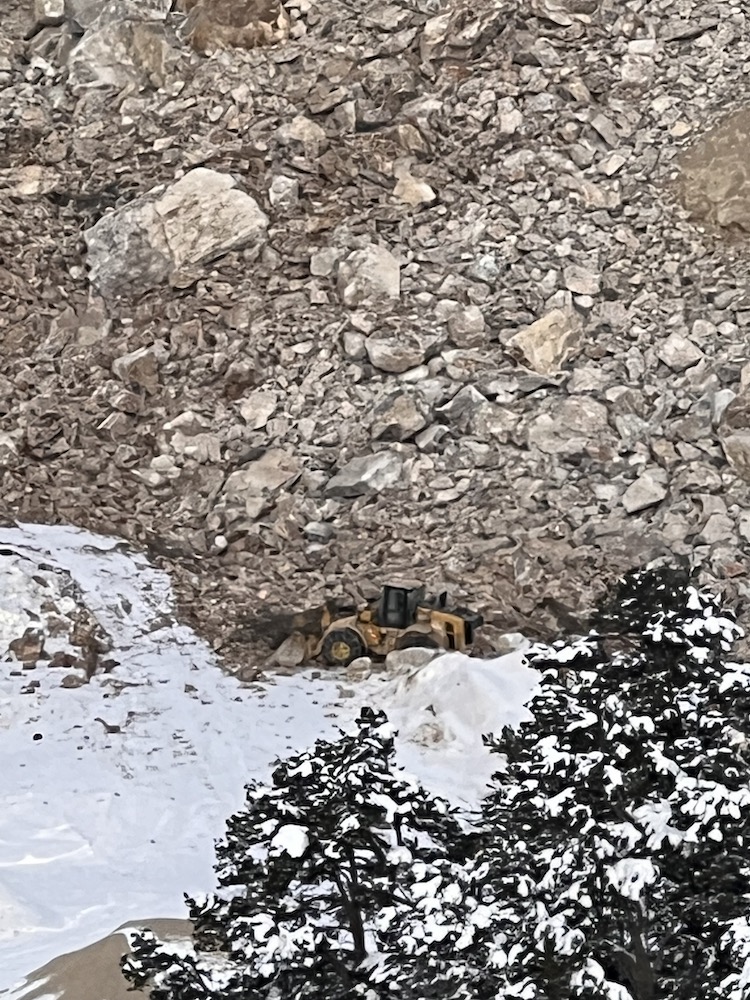
The rockslide debris engulfed a large area of the quarry’s production bench and bashed a front-end loader that was parked on the production bench. Workers were busy elsewhere at the time the slide occurred, and no injuries were reported.
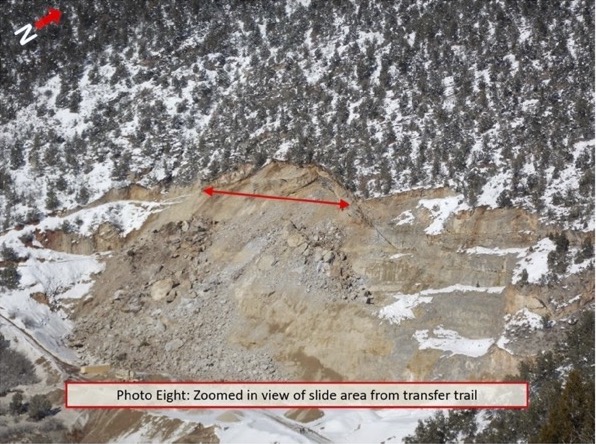
This photo, included in the Colorado Division of Reclamation, Mining and Safety inspection report of Jan. 25, 2023, uses a red line to show the location and width of the slope collapse.
The collapse occurred on the west side of the quarry highwall, where the limestone deposit tilts downward at a 45-degree angle.
A highwall on the east side of the quarry, seen here to the right of the red line, is where the limestone tilts downward at a less-steep, 30-degree angle. This section did not break loose. RMI blasted in this eastern area most recently on Dec. 13, 2022.
Federal “103(k) Order”
Matthew Lemons, district manager for the federal Mine Safety and Health Administration in Lakewood, confirmed by email that the agency issued what is called a “103(k) order” following the rockslide.
Lemons declined to speak with us about MSHA’s investigation, and refused our request for a copy of the order. He instructed us to file a Freedom of Information Act request to obtain the order, which we filed on Jan. 31. MSHA estimates the document will be delivered by March 2.
Other federal and state officials described the MSHA order as a temporary shut-down.
“The MSHA order essentially shuts down mining operations until they deem it safe,” said Larry Sandoval, manager of the U.S. Bureau of Land Management (BLM) Colorado River Field Office in Silt. BLM has been coordinating with MSHA following the slide, Sandoval said.
Amy Yeldell, a mine inspector with the Colorado Division of Reclamation, Mining and Safety (DRMS), reported learning about the MSHA order while inspecting the slide on Jan. 23.
“The Division (DRMS) was informed that MSHA had placed the production bench under a 103(k) order. This was described as essentially putting a cease and desist order on the production bench,” Yeldell wrote in her inspection report.
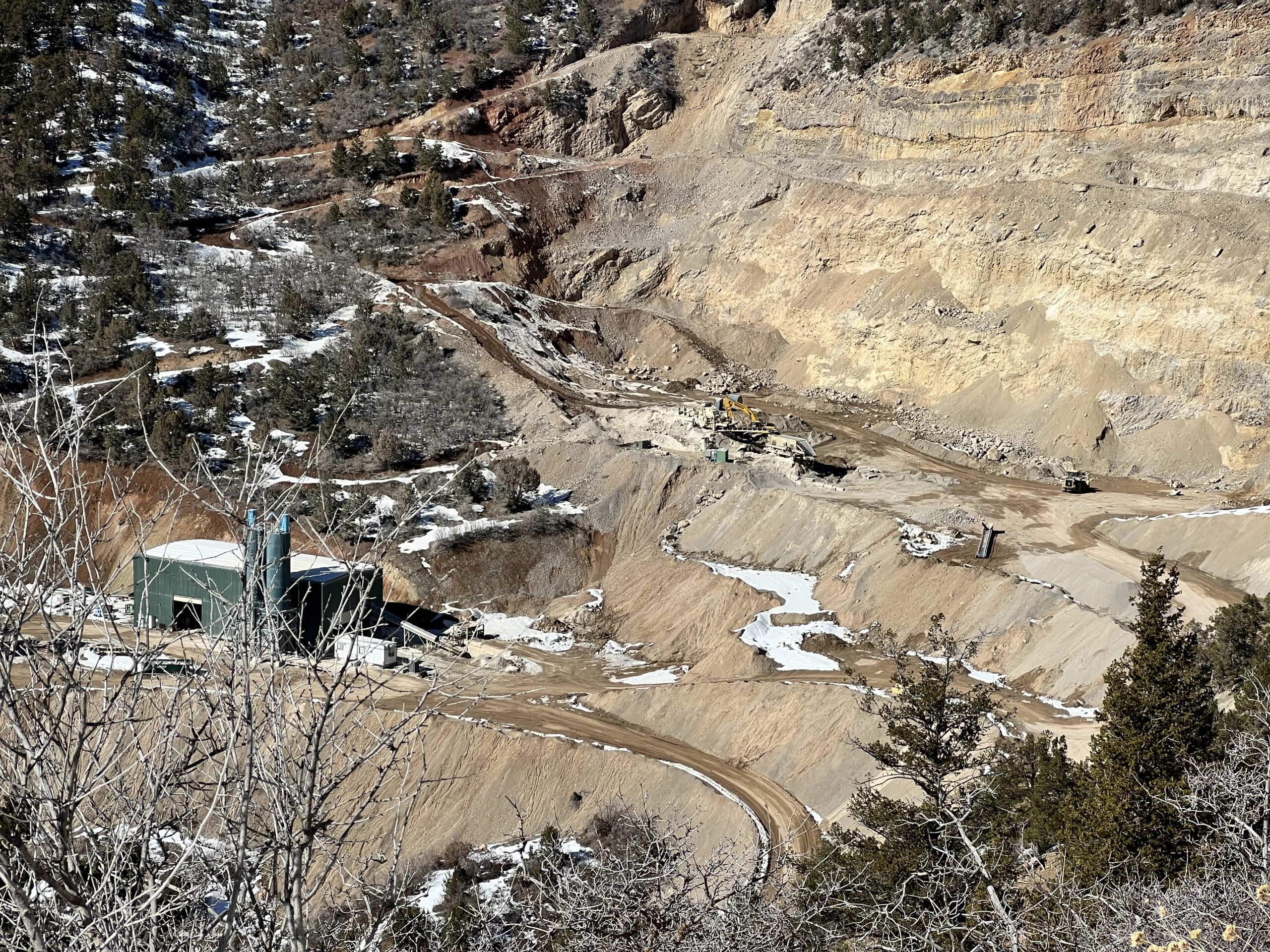
The Rocky Mountain Industrials limestone quarry on Feb. 14, 2022, about 11 months before the slope collapse.
State Notice of Possible Violation
Yeldell and another Colorado DRMS mine inspector, Dustin Czapla, visited the quarry on Jan. 23, and produced a detailed report describing the slide. Wagner and RMI CEO Brian Fallin accompanied the state inspectors at the site.
Yeldell and Czapla talked with Wagner and Fallin about conditions at the quarry prior to the slide, noted the differences in the highwall angles, and observed water seeping out between the two upper layers of limestone. They also saw workers loading previously processed rock onto trucks, but noted that no work was taking place on the production bench or in the crushing mill.
DRMS issued a notice of “Possible Violation” on Jan. 25, alleging that RMI’s mining methods “resulted in destabilized highwalls and failed to control erosion and sedimentation on the affected lands.”
The inspection report also notes, “Mitigation of the rockslide to stabilize the highwall and reclaim the surrounding area will require an impact to areas outside of the affected lands.”
The notice requires RMI to appear before the Colorado Mined Land Reclamation Board for a formal hearing during the board’s two-day meeting in Denver on March 22 – 23.
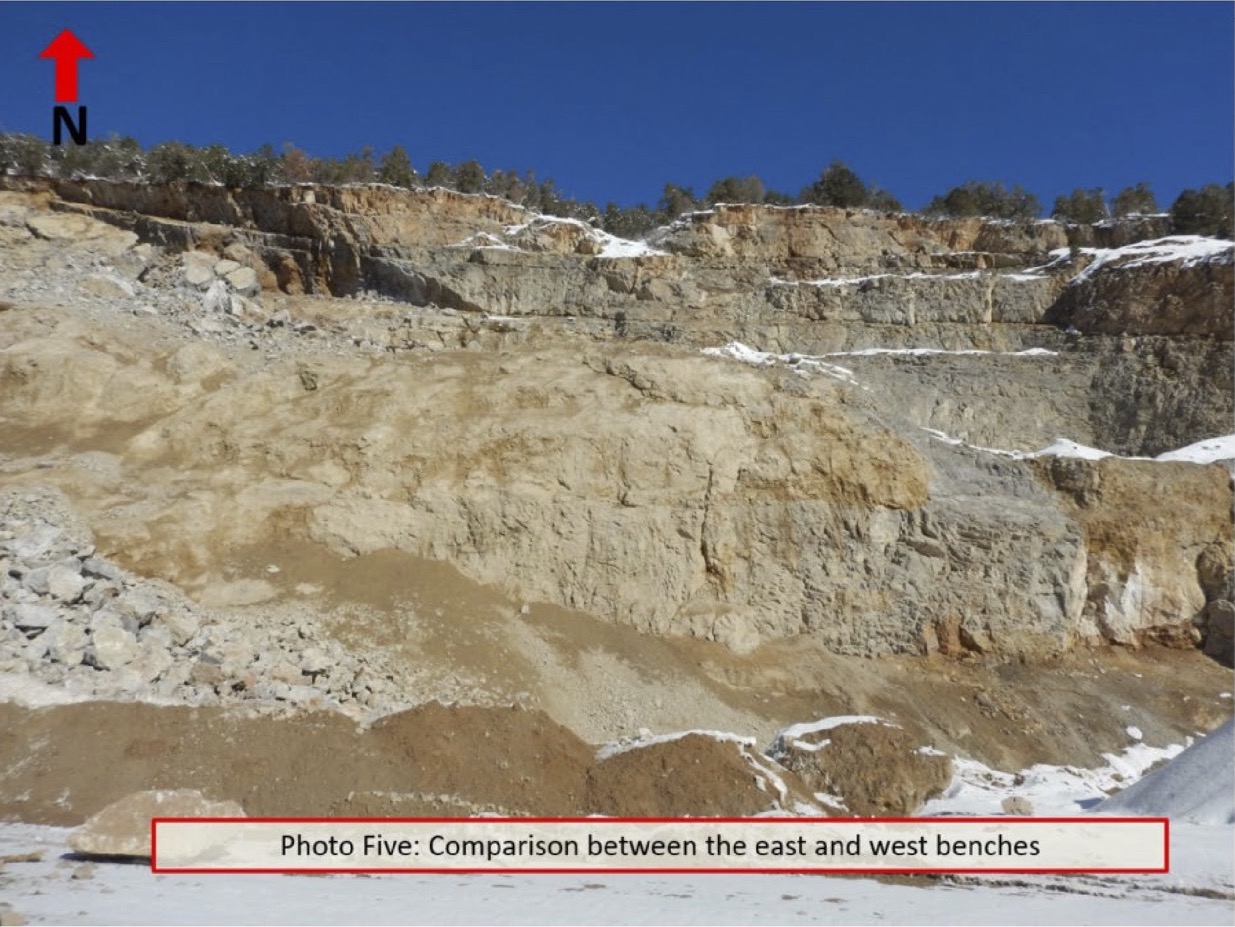
This image, from the Colorado Division of Reclamation, Mining and Safety inspection report, illustrates the slope differences between the east bench, at left, where the slope collapse occurred, and the west bench, at right. The sharp overhang of the limestone deposit above the east bench is in shadow.

This image, from the Colorado Division of Reclamation, Mining and Safety inspection report, looks at the production bench from the east side of the quarry. The circled area shows where the most recent blasting occurred in normal quarry operations, on Dec. 13, 2022.
RMI’s response plan
Yeldell’s inspection report offers a look at how RMI plans to deal with the rockslide debris and the limestone rock face that now hangs over the quarry site. The challenge, she wrote, is to restore the quarry to pre-slide conditions and continue to mine limestone without causing another slide.
Fallin and Wagner told the state inspectors that the company plans to:
- Consult with a geotechnical engineer regarding blasting options.
- Conduct a lidar survey * to get an accurate picture of the slide area
- Use a consultant to assist with permit revisions to meet requirements set by the state and federal agencies.
The DRMS inspection report summarized the next steps as Wagner envisioned.
“The preliminary plan according to Mr. Wagner would be to gain MSHA approval for safety issues to remove the loader, gain access to the east side of the bench to remove already mined and processed material, gain access to the west side to begin cleanup work, and finally be able to resume full/normal mining operations.”
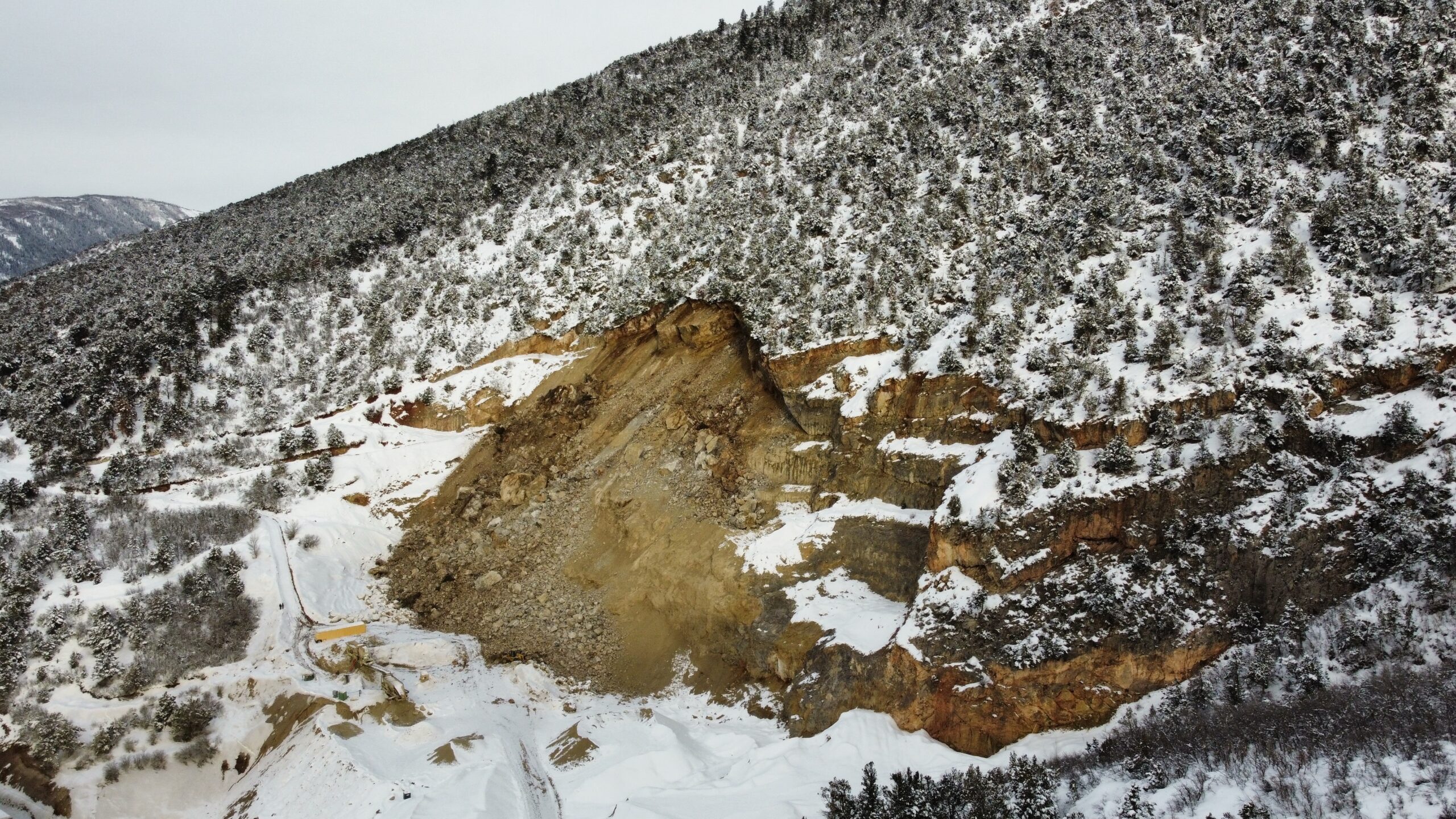
The Colorado Division of Reclamation, Mining and Safety inspection report notes, “Mitigation of the rockslide to stabilize the highwall and reclaim the surrounding area will require an impact to areas outside of the affected lands.”
Slide interrupts BLM permit enforcement process
The Jan. 18 slope collapse occurred while RMI was undergoing a permit revision process with BLM, after BLM cited the company last August for four areas of non-compliance at the quarry, including the highwall configurations.
BLM was in the midst of reviewing RMI’s second attempt at submitting a revised plan of operations when the slide happened. The first submission, on Oct. 7, 2022, was deemed incomplete. The second attempt came in on Jan. 6, and BLM expected to determine whether it was complete by Feb. 6.
“We are now looking at it not being complete because of the changed conditions,” Sandoval said on Feb. 3, referring to the Jan. 18 rockslide. Prior to the slide, he said, the second submission “was looking good” in terms of being complete and ready for a public review process.
The slope collapse interrupted BLM’s enforcement process, he said. “We are working to understand how the changed conditions affect how BLM moves forward,” Sandoval said.
He said BLM intended to respond to RMI’s revised plan of operations submission in the Feb. 6 timeframe, but declined to provide a copy of that letter to the GSCA until after it had been officially received by RMI.
News coverage
Glenwood Springs Post Independent, Jan. 19, 2023
Rockslide inside RMI’s Glenwood Springs quarry being investigated
Glenwood Springs Post Independent, Jan. 24, 2023
Federal mine safety officials close part of Glenwood Springs quarry
Colorado Sun, Jan. 27, 2023
Massive rock slide halts operations at Glenwood Springs quarry